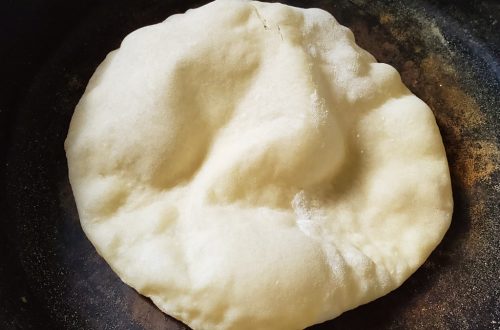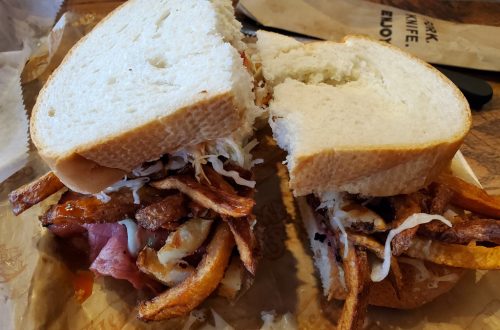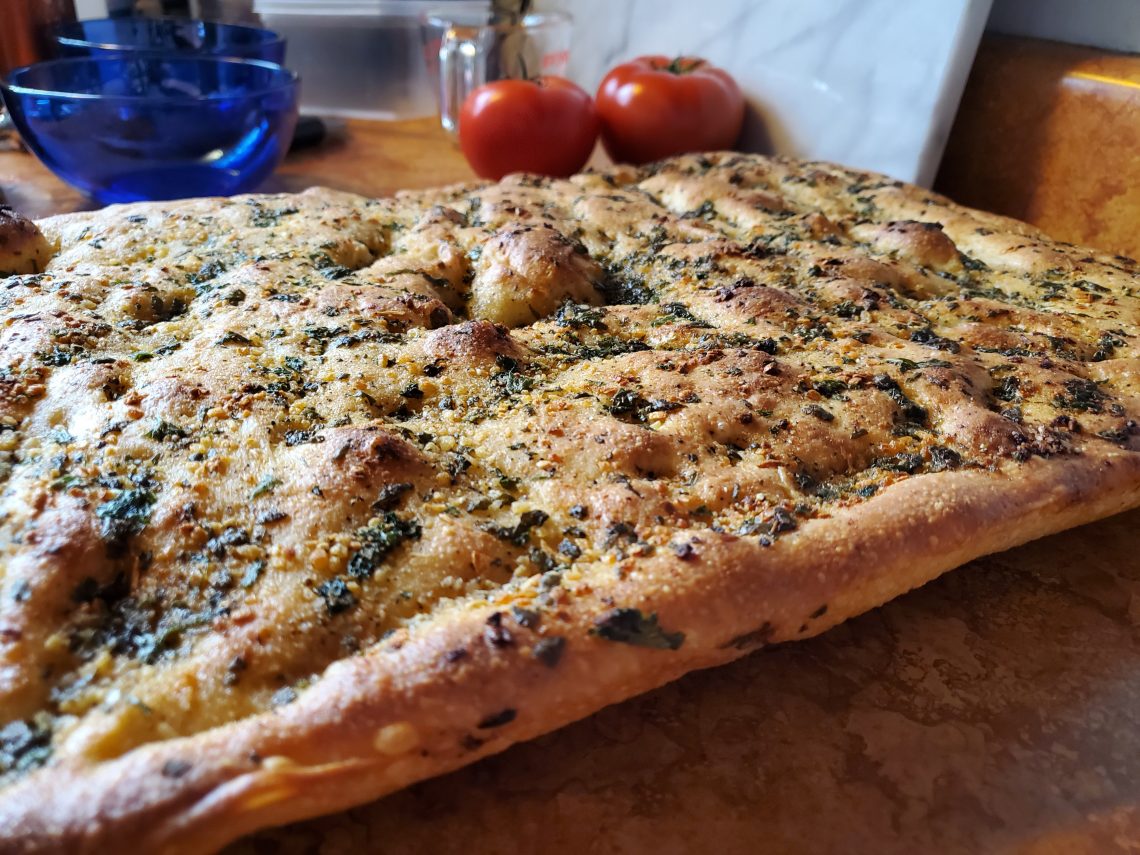
How to Make Accidental English Muffins
I have the awesome benefit of being able to work from home on some days. Yesterday (Friday) was one of those days. Fridays work particularly well, as I’m often able to make some more complicated recipes that might require time to cook down, or morning-of prep for a late afternoon or evening cook. Eliminating the commute also means I generally have more energy in the evening, so on top of making a big dinner so that we have leftovers to enjoy over the weekend (and, sometimes enough for a re-run the following week!), I usually have enough gas left in the tank to get a bread started for a Saturday bake. If I know I’m going to be working from home on a Friday, I sometimes also do the baking prep Thursday evening, then bake Friday to have a bread with dinner.
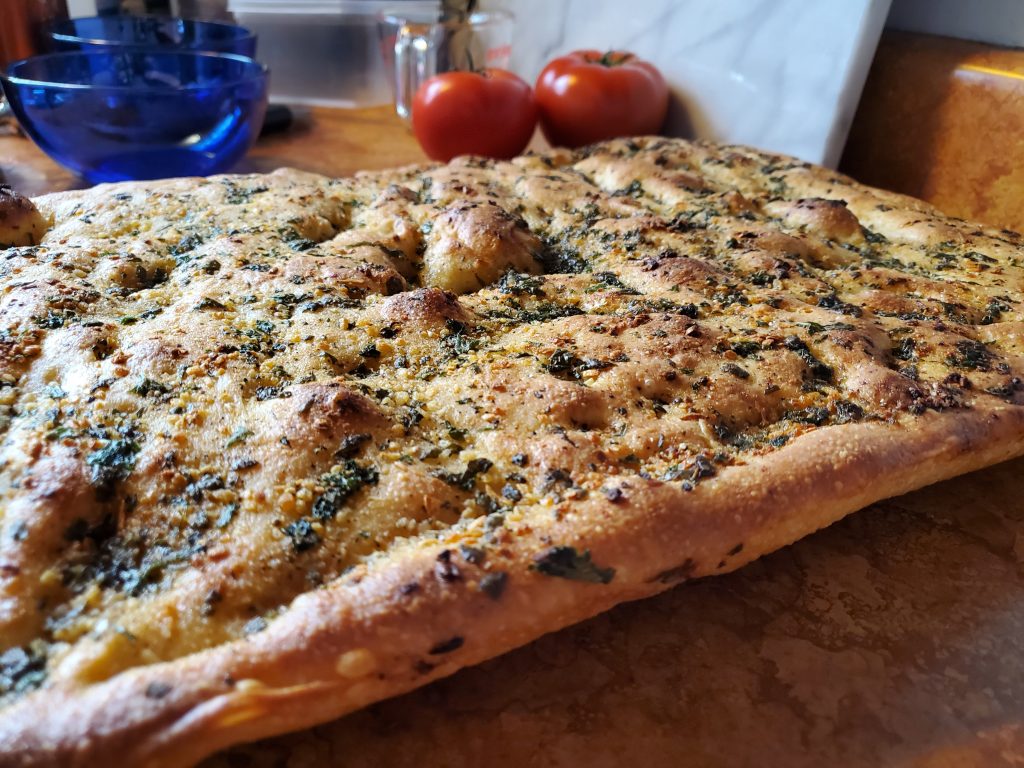
This week, I did the awesome free online grocery order with Giant Eagle, which Jenny and I picked up after we got off of the bus on Thursday evening. This gave me the ingredients to make rigatoni with vodka sauce, which was great (so great, in fact, that we didn’t really leave any leftovers). That order also had the stuff I would need to bake my favorite focaccia on Saturday, which would then make awesome sandwiches with cured meats (salami or prosciutto), mozzarella cheese, basil pesto or fresh basil, and tomato or roasted red peppers. “Have it your way,” fresh food style. 🙂
At this point, you’re wondering what any of this has to do with English muffins. OK, so Friday, I had everything I needed to turn a few rotisserie chicken carcasses I had been saving in the freezer into chicken stock from scratch, so that morning they went into a big pot with onions, celery, carrots, garlic, and parsley stems (including all of the vegetable trimmings, which are honestly the secret to a good broth), and they went on simmer for the rest of the day while I worked. That evening, shortly before Jenny got home, I strained the stock, put a bunch in containers to freeze, and put what was left into a pot with some rough chopped onions, celery, and carrots. Then I made kladzione kluski (Polish drop dumpling “noodles”), and Jenny and I enjoyed some awesome chicken soup for dinner.
The plan was to clean up all the soup/stock stuff, clean up the kitchen a bit, and then get the focaccia started. It requires a overnight fermentation in the refrigerator, so I wanted to get it started and into the ‘fridge, then spend the rest of Friday evening reading with Jenny.
I whip out my trusty scale and start to weigh out all of the ingredients. I’m thinking while I do this that I don’t remember butter, milk, and sugar in the recipe, but it had been a few months since I made it, so I continued on. I was happy to read that I could try buttermilk instead of milk for a more traditional taste, and I actually had some buttermilk in the fridge left over from breading shrimp for Jenny last week (this is where some alarm bells should have been going off full-volume, but, alas, I continued).
The focaccia recipe makes a pretty loose, sticky dough. I was kind of surprised when this dough came together quickly and also pretty firmly. And it was a small dough ball, which definitely wouldn’t fill out a half sheet pan. Um, something was amiss. I went back to the recipe, and confirmed that I wasn’t missing some liquid ingredient. That’s when it clicked that I knew there was olive oil in the dough. There is a lot of oil added afterwards, too, and I had already made my herbed oil for that step, but I hadn’t added any oil to the dough. So I start to look at the recipe to see where I missed that and how much I needed to incorporate, but I still felt something was wrong. That’s about the time I noticed that the heading on the page said, “English muffins.”
Oh, no. I just spent a good bit of time, a fair amount of flour, and made several dirty items that I was going to have to wash, and I made the wrong dough. Oof. OK, into an oiled bowl with that dough, and into the ‘fridge it goes. I figured I would try to make them Saturday, if the dough worked at all, but I needed to stop that track and get the focaccia started if I wanted to get to bed before 2AM. Quick wash of everything I needed, clean up the counter again, Mr. Scale back out on the counter, everything back out of the pantry cupboard, here we go, dough round #2, this time on the right page!
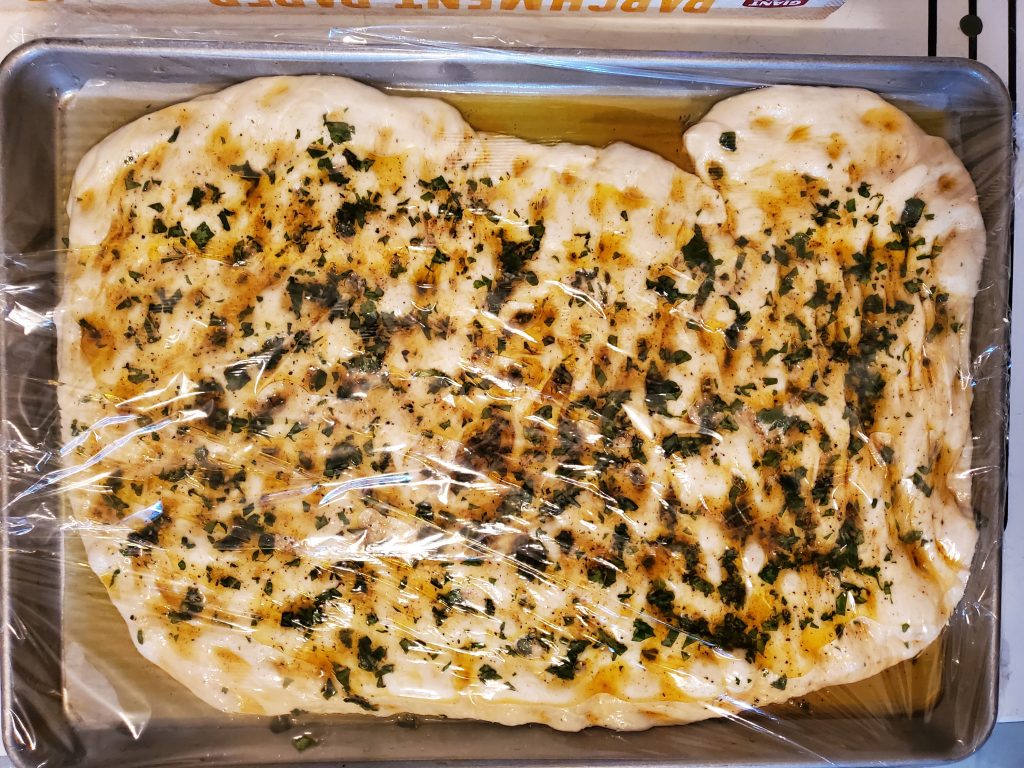
The focaccia recipe goes together pretty quickly, and indeed made the loose, sticky dough I knew it should have. It takes about two hours of fermentation on the counter, with a stretch-and-fold cycle every 30 minutes. At the end of this cycle, it gets panned in a quarter sheet pan, covered with herbed oil (or just regular olive oil and salt, if you want to go simple), dimpled out as far as it will go without ripping the dough, and then it gets covered and moved into the ‘fridge for an overnight fermentation.
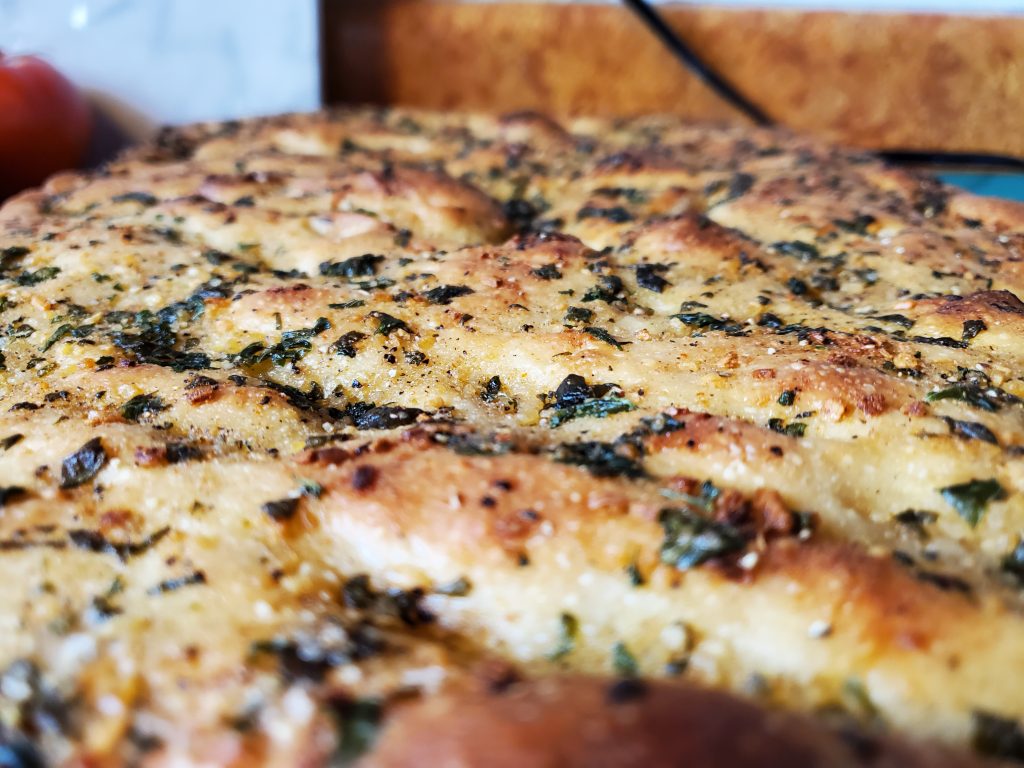
This morning, after breakfast, I pulled the pan out of the refrigerator and prepared it for its final fermentation period. It gets a little more oil, dimpled and stretched out to the pan edges, and then it sits, covered, at room temperature, for three hours.
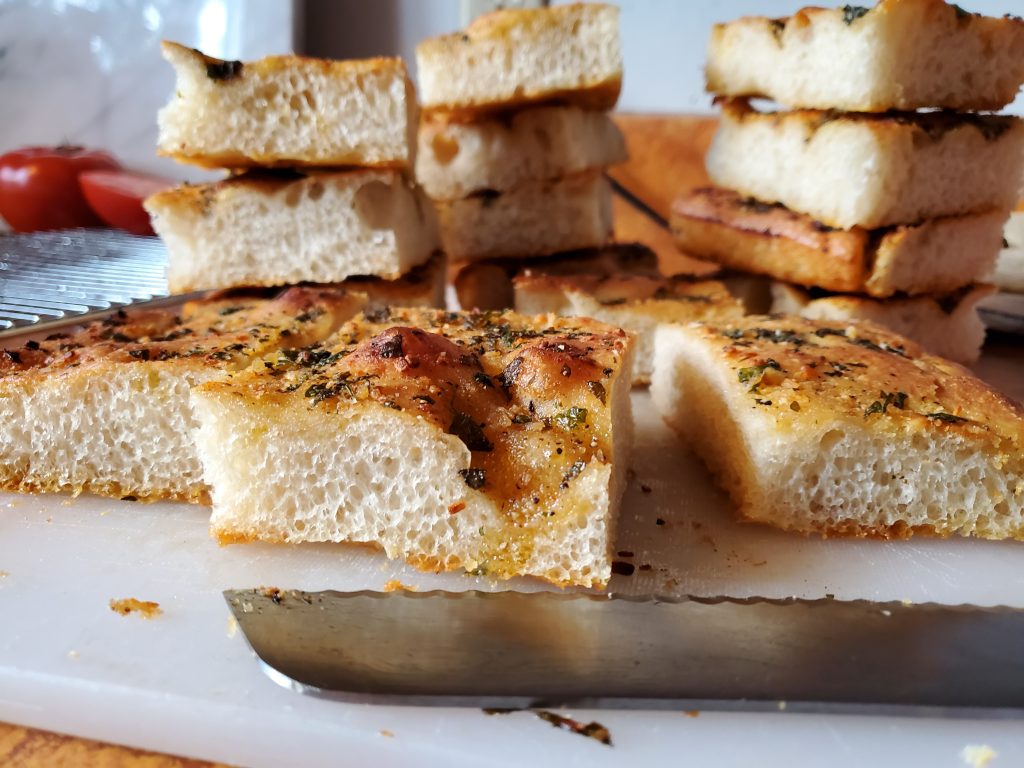
A little house cleaning made those three hours go by quickly. It goes into a 500F oven that gets turned down to 450F right after putting it in (the high initial heat helps to get the oil up to temperature quickly so that it can help to fry the outside edges of the dough). It bakes for 15 minutes, gets turned around, and then bakes for another 5-10 minutes. It took about six minutes of that period, and it was done. Woohoo! It smelled absolutely fabulous. I uaed a lot of fresh herbs in the oil this time around, and they made a huge difference over the dry herbs I used last time.
After cooling a bit, Jenny and I sliced some up and had some great sandwiches for a late lunch. She sat down to work on some podcasting scripts, and I sat down to work on making some cables and getting some prep work done for the high school shows I have coming up this spring.
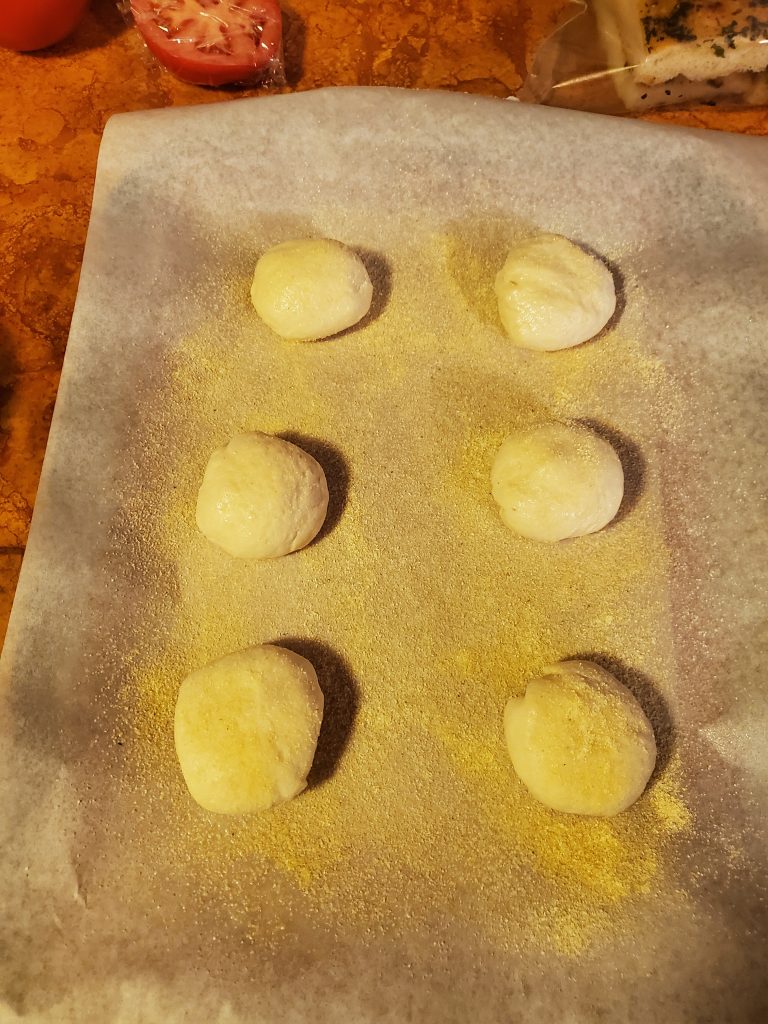
This evening, I decided to see if I could make anything out of that English muffin dough I had accidentally made last night. I popped it into the oven at 100F to see if it would proof. It did! Rise action! Yahoo! It’ll at least make some kind of leavened bread! I shaped and panned it according to the recipe. I’ve never made English muffins, so this was new territory for me.
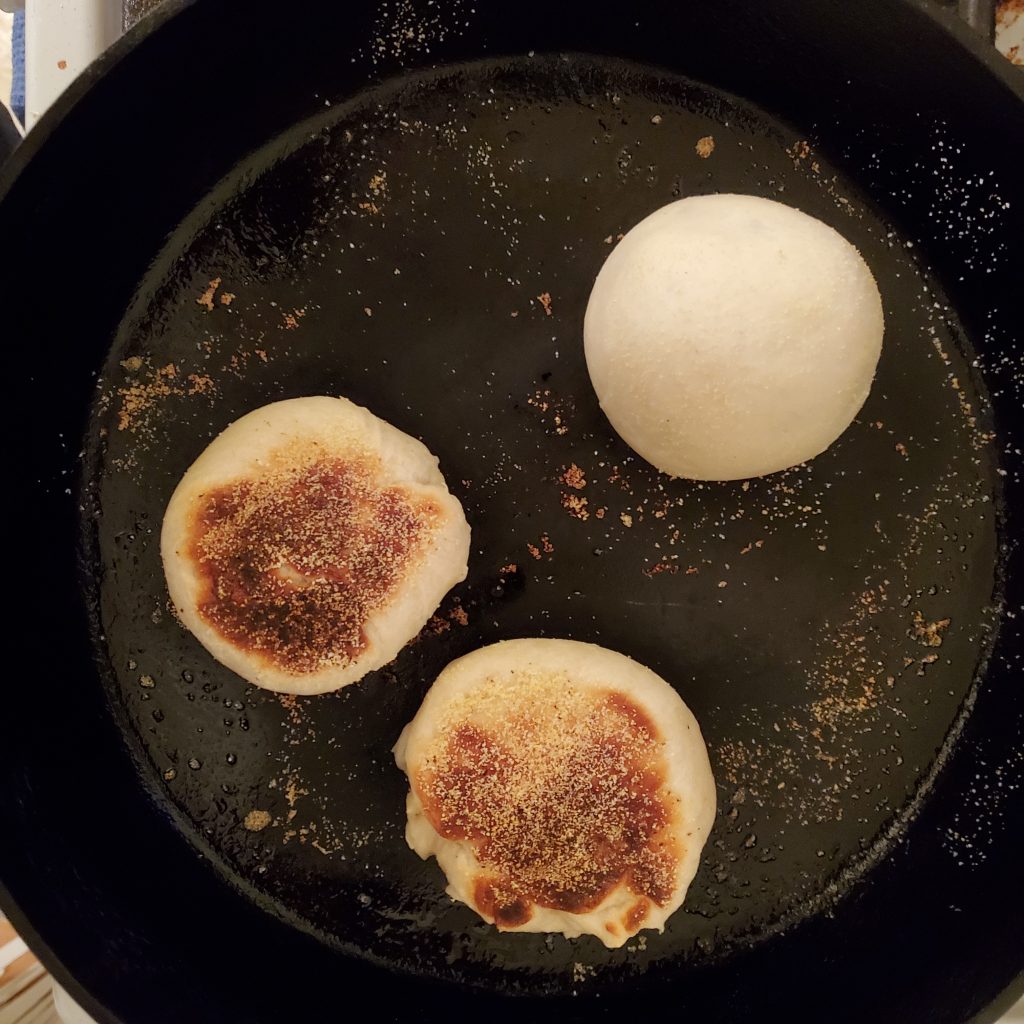
An hour and a half fermentation after panning with cornmeal dusted on both sides, and they were ready to get toasted. English muffins get cooked on a griddle (and often finished in the oven, to ensure the centers are baked). Into the cast iron they went, for about seven minutes per side, then transferred into a 350F oven for about five minutes to ensure they’re fully baked. They didn’t spread out as much as they should have, and the insides weren’t as airy as they should have been, but I suspect both issues were due to the refrigeration of the dough. I made a ham sandwich on one, though, and they taste phenomenal! These are definitely going back on the list of things to bake!
There you have it. How to make accidental English muffins by making a traditional Italian focaccia. Check back next time for when I make accidental chicken pot pie! (Just kidding. Maybe.)

